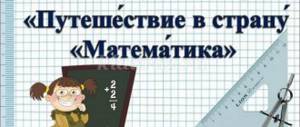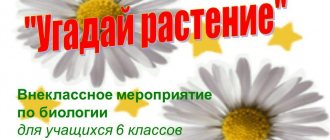Interactive technologies in music lessons educational and methodological material on music on the topic
Municipal budgetary general education
municipal institution Plavsky district
"Molochno-Dvorskaya secondary school"
Methodological problem: “Interactive teaching technologies in musical art lessons as a necessary condition for the formation of creative activity and personal self-realization”
Pedagogical experience as a music teacher
Shendrikova Elena Vladimirovna
December 2013
Musical art is a special subject. It intertwines many lines of the educational process. The main objectives of the integrated subject “Musical Art” are to introduce students to spiritual values, to form a personality with creative thinking, to assimilate by schoolchildren the values of musical culture, and to cultivate an aesthetic attitude towards reality. I am sure that aesthetic education should be inextricably linked with moral education. Aesthetics without ethics is dead. In this regard, I believe that the tasks of aesthetic and moral education are especially relevant now, in our time. And in carrying out these tasks, I, as a teacher of the aesthetic cycle, have a special role to play.
The tasks of both the modern school and the subject “Musical Art” are serious and difficult. How to “fulfill them, how to start them?” After all, we, teachers, feel especially acutely that in our time there has been an unprecedented gap between culture and education. “During the years of study, a graduate must not only prepare for adult life, but also catch up with humanity in its cultural development, and then create himself according to the laws of culture,” writes V.A. Domansky, Doctor of Pedagogical Sciences, in the article “Living not only in society, but also in culture.”
In the 21st century, the approach to modern school has changed. Issues of intensifying the learning of schoolchildren are among the most significant problems of education at the present time and help to resolve some problems not only in the teaching, but also in the educational process of schoolchildren. I want the music lesson to be no exception, so I chose this methodological problem.
The main goal is to form the creative activity of students’ personality and its self-realization. In my opinion, this will help children choose the right guidelines in the future, show their individuality and take their rightful place in life.
To implement and achieve results on this problem, I set myself the following tasks:
- Creating conditions for creative activity of schoolchildren;
- Development of cognitive interest and encouragement for independent
student activities;
3. Training in successful communication skills (the ability to listen and hear each other, build a dialogue);
4. Formation of universal human values;
5. Organization of an atmosphere for personal self-realization.
Recently, interactive learning technologies have become widespread, which have become a priority for me now and form the basis of my work with students. Every time I use them, I am convinced that they help to see and reveal the potential of each student, provide an opportunity to increase their activity, and contribute to the health of schoolchildren.
Interactive learning in music lessons partly solves another significant problem of today - student workload. The flow of information, technological communications, and computerization put enormous pressure on our children.
In my lessons, I try to help students cope with this problem. We are talking about relaxation, relieving nervous stress, switching attention, changing forms of activity and real live communication between students.
“Interactive” (from English inter - mutual, act - to act) is learning immersed in communication. Maintains the final goal and main content of the subject, but modifies the forms and techniques of teaching.
Interactive method diagram
In my work I try to use interactive methods. Specific recommendations can be seen in the developments of the musical art lessons I compiled, presented below, and in the video clips. All developments include the use of various interactive technologies at different stages of the lesson.
In my work, I rely on scientific achievements and the experience of famous teachers, musicologists, and psychologists. In preparation for my lessons, I study technologies:
— humane and personal education Sh.A. Amonashvili;
— intensive developmental training L.V. Zankova;
— problem-based learning A.M. Matyushkina.
I turn to the works of D.B. Kabalevsky, N.A. Vetlugina, T.N. Zavadskaya. These teachers focus on the importance of music lessons as a source for co-creation between students and teachers.
In my opinion, interactive methods and techniques are one of the main ways to develop the personal orientations of schoolchildren.
“You cannot teach a person something, you can only help him make this discovery for himself” Galileo Galilei.
I am sure that in order to raise the importance of the subject “Musical Art” in a modern school, to arouse children’s interest in art, it is necessary to look for new methodological approaches to teaching the subject in the conditions of the rapid development of modern youth.
The system of creative interaction in the classroom also requires high pedagogical skills from me. I am constantly looking for new ideas. I work on myself to maintain psychological balance and emotional state for my students. I try to be open, tolerant, and adhere to a democratic style of communication with children.
I maintain emotional coloring throughout the educational process, depending on the topic of the lesson.
- The simplest and most common way to “reach out” to
Each student is given a simple introduction: “Imagine that...”.
To create a relaxed, trusting atmosphere in the classroom, I often use the phrases: “I invite you, young friends, to ...” or “Today we are visiting ...”
I also use these techniques when interpreting musical works. This allows children to think creatively, analyze, fantasize and reveals the emotional side of students.
- "Oh, eureka!" (heuristic conversation). This method encourages
students to independent activity. The question can be raised as problematic at the beginning of the lesson. The problem can be formulated before listening and interpreting a piece of music, before becoming familiar with a new song. Students can also be asked to draw a conclusion at the end of the lesson. In any case, the student must take a step in his development.
- Work in pairs. One way to get everyone involved
The student's job is to organize questions for each other. This activates interest, evokes a spirit of competition, and increases motivation to learn.
Another type of work in pairs - discussing a problematic topic develops skills of successful communication between peers, on the other hand, develops the ability to defend one’s opinion. For example, a lesson in 8th grade in the section “Music in dialogue with modernity” on the topic “Our great contemporaries”. The title of the topic is the main problem of the lesson.
Key words for discussion in pairs: 1. “Ours” (What does the word “ours” mean?); 2. “Great” (Why “great”?); 3. “Contemporaries” (Who can be considered “contemporaries”?).
- "Battle". If the previous technology is used in work
small groups, then you can call it “Battle”.
- Work in groups. This technology helps to establish
communication among students and leads to a consensus. Here I often use the technique: “Whoever is friendlier is faster!”
- Brainstorming develops the ability to think, find
non-standard solutions to educational and creative problems.
For example, in the 5th grade on the topic “Music and the Art of Words” in the lesson “Literature and Music about the Crimea”, after listening to the suite “Crimean Sketches” by A. Spendiarov, I demonstrate the names of all parts of the suite and invite the children to choose the name of the part they heard, justifying their answer.
Part 1 Part 2 Part 3 Part 4
Dance Elegiac song Table Khaitarma
- Method of artistic and pedagogical dramaturgy
allows you to combine other methods and techniques and smoothly move from one stage of work to another in the same way as a piece of music is constructed. The artistic title of the lesson helps to penetrate deeper into the topic of the semester and to attune the students emotionally. And the epigraph to the lesson is its ideological seed.
- Active-role-playing (game) organization of training.
My favorite method is a game, as it serves as an excellent way to involve the whole class in the work, removes students’ fear of giving the wrong answer, and liberates students.
Psychologists believe: “Gaming activity is a special sphere of human activity in which a person does not pursue any other goals other than receiving pleasure from the manifestation of physical and spiritual forces.”
Due to the variety of games, this method can be used not only in primary school, but also in secondary school. In my lessons I use the following types of games: plot, role-playing, simulation, dramatization. All types of games perform a health-saving function.
In my work I use interactive didactic games as a means of teaching, education and development. The main educational impact belongs to didactic handouts, game actions, which, as it were, automatically lead the educational process, directing the children’s activity in a certain direction. In my lessons I use games that differ in the nature of the pedagogical process:
Educational
The essence of the educational lotto: after reading the question, you need to select the correct answer on the educational game board and cover it with a fragment of the picture. If all the answers are correct, a picture will form. This technology helps students consolidate and generalize the material they are studying and reduces emotional anxiety when answering.
Cognitive
For example, searching for the necessary information in textbooks or additional sources, or independently composing questions based on the proposed material. This can be work individually, in pairs or in small groups. This arouses interest in students’ independent cognitive activity.
In the 8th grade, studying the topic of the first semester “Reflection of eras in the art of music,” you need to find the necessary information and come up with questions for it (work in pairs). And the task is the following: to prove that Beethoven belongs to his era (XVIII-XIX centuries), and to the direction of “Viennese classicism”. This technology can be classified as elements of design activity.
Creative
This is creating your own options for ending a fairy tale, composing melodies or poems (for younger schoolchildren there may be an assignment to compose two lines to two proposed lines), composing rhythmic exercises.
Generalizing
Use and discussion of story-based illustrations and drawings for music lessons. “Visiting the donkey”, “Haven’t you been...?” (a character from an animated film is a parrot). “New Year gathered friends”, etc.
Developmental
Using story-based illustrations, I try to develop the thinking, imagination, and memory of elementary school students. For example, I suggest the children remember the donkey’s musical friends (musical means of expression) or choose a picture that includes rhythm, meter (drum), register (bird).
Thus, any type of interactive game has a certain result, which is its ending. For me, the result of the game is always an indicator of the level of student achievement or knowledge acquisition, as well as the ability to apply this knowledge in other school subjects and, of course, in life. I am convinced of this in every lesson. Children take part in various types of games with great pleasure.
It is in active gaming activity that the interpenetration of forms, methods and techniques of interactive learning occurs.
And the following methods that I use make it possible to create a situation of student success in the classroom. The preparatory work of these methods takes about two to three weeks. But no matter how laborious the work is before the lesson, so great is the feeling of satisfaction after it. And the guys are experiencing real creative excitement!
- Student performance as an accompanist or presenter
This method helps children show their independent activity. Reveals the creative and performing capabilities of students. Helps them feel more confident in the classroom and on stage.
- Dramatizations allow students to relax, increase self-esteem, and develop creative potential.
- Exhibitions and presentations help students “prove themselves”
on lessons. Showcasing one’s own work increases the child’s authority,
his self-confidence and self-esteem.
12. Project method. As a rule, in your lessons you manage to use only part of the project activity, its elements. At the same time, the project can have a long-term effect, have its continuation and become creative homework for students.
- Integrated lessons help to reveal and find different sides of students' personalities. For example, a binary lesson in musical art and geography solves the problem of non-humanitarian schoolchildren and helps to demonstrate their abilities and knowledge in the discipline of natural sciences.
Conclusions:
— Interactive forms and methods are among the innovative ones and contribute to the activation of students’ cognitive activity in musical art lessons and independent comprehension of musical material.
— Help solve problems of aesthetic and moral education.
— Form the creative activity of students in academic and extracurricular activities.
— They are a condition for self-realization of students’ personality in the modern world.
Thus, the goal of this methodological problem is achieved. The children take part in school life with pleasure: they realize their abilities not only in music lessons, but also in extracurricular activities, and participate in regional competitions. Students use some techniques and game moments taken from music lessons in class, which they prepare on their own. And that's great! I work with creative and gifted children. I am the leader of a vocal circle, where I am happy to meet my students again. Observing students throughout school life, I note an increase in the success of the children by high school. I am sincerely happy for them, seeing good results, and I am delighted with the joy and smiles on the faces of my students!
Bibliography:
- Avdulova T.P. “Psychology of play: a modern approach” - M.: Izdatelsky, 2009.
- Aliev Yu.B. “Handbook for a school teacher-musician” - M., Vlados, 2002.
- Arzhanikova L.G. “Profession - music teacher” - M., Education, 1985.
- Bugaeva Z.N. “Fun music lessons” - M., Ast, 2002.
- Kabalevsky D.B. “Education of the mind and heart” - M., Education, 1989.
- Kritskaya E.D., Shkolyar L.V. “Traditions and innovation in musical and aesthetic education” - M., 1999.
- Lakotsenina T. P. “Modern lesson” Part 5. Innovative lessons. "Teacher", 2007.
- Latyshina D.I. “History of Pedagogy” - Gardariki, 2005.
- Lyaudis V.Ya. “Innovative training and science” - M., 1992.
- Romazan O.A. “Music lessons in a secondary school” - Simferopol: “Hatikva”, 2011.
- Smolina E.A. “Modern music lesson” - Yaroslavl, Development Academy, 2006.
Internet resources:
- https://900igr.net/datas/stikhi/V-gostjakh-u-skazki.files/0032-032-Skazka-o-tsare-Saltane.jpg
- https://www.balletart.ru/rus/news/2006/img/b06_06_3.jpg
- https://img-fotki.yandex.ru/get/4703/dioseya.26/0_482c4_4f175f16_L
- https://www.operaballet.net/content/files/photoalbums/77/image.image8420.jpg
- https://img1.liveinternet.ru/images/foto/b/3/55/2204055/f_13187638.jpg
- https://img0.liveinternet.ru/images/attach/c/2/69/23/69023861_1294607115_IMG_4240_.jpg
- https://www.kordram.ru/spektakli/schelkunchik/afisha.jpg
Interactive forms of teaching in music lessons in secondary schools.
Interactive learning technologies
- this is such an organization of the learning process in which it is impossible for the student not to participate in a collective, complementary process of learning knowledge based on the interaction of all its participants.
Interactive activities in the classroom involve the organization and development of schoolchildren’s communication skills (verbal and nonverbal communication), mutual understanding, and interaction. Through interactive learning, students learn to think critically, solve complex problems based on the analysis of circumstances and relevant information, weigh different opinions, make thoughtful decisions, participate in discussions, and communicate with other people.
Basic requirements
that ensure the success of learning using interactive technology are:
A positive relationship in which there is an understanding among all group members that the shared learning activity will benefit each student.
Direct interaction in which all group members are in close contact with each other.
Individual responsibility, in which each student must study the material provided and be responsible for helping others (more able students do not do other people's work).
Development of teamwork skills, that is, students master the interpersonal skills that are necessary for successful work (planning, distribution, questioning).
Performance appraisal, in which specific time is allocated during which the group evaluates the success of its work.
Here are examples of some interactive teaching methods used in music lessons.
"Brainstorm"
"Brainstorm",
Brainstorming (Delphi method) is a method in which any student answer to a given question is accepted. It is important not to immediately evaluate the points of view expressed, but to accept everything and write down everyone’s opinion on the board or piece of paper. Participants should be aware that they are not required to provide reasons or explanations for their answers. Brainstorming is used when it is necessary to find out the awareness and/or attitude of participants towards a certain issue. You can use this form of work to receive feedback.
Algorithm: 1. Ask participants a specific topic or question for discussion. 2. Offer to express your thoughts on this matter. 3. Write down all the statements made (accept them all without objection). It is allowed to clarify statements if they seem unclear to you (in any case, write down the idea as it sounded from the participant’s lips). 4. When all ideas and judgments have been expressed, you need to repeat what task was given and list everything that you wrote down from the words of the participants. 5. Finish the work by asking the participants what, in their opinion, conclusions can be drawn from the results obtained and how this can be related to the topic of the training. After completing the brainstorming (which should not take much time, on average 4-5 minutes), you need to discuss all the answer options, select the main and minor ones. Brainstorming is an effective method when necessary: – discussing controversial issues; – stimulating unsure students to take part in the discussion; – collecting a large number of ideas over a short period of time; – determining the awareness or preparedness of the audience; – work in small groups.






